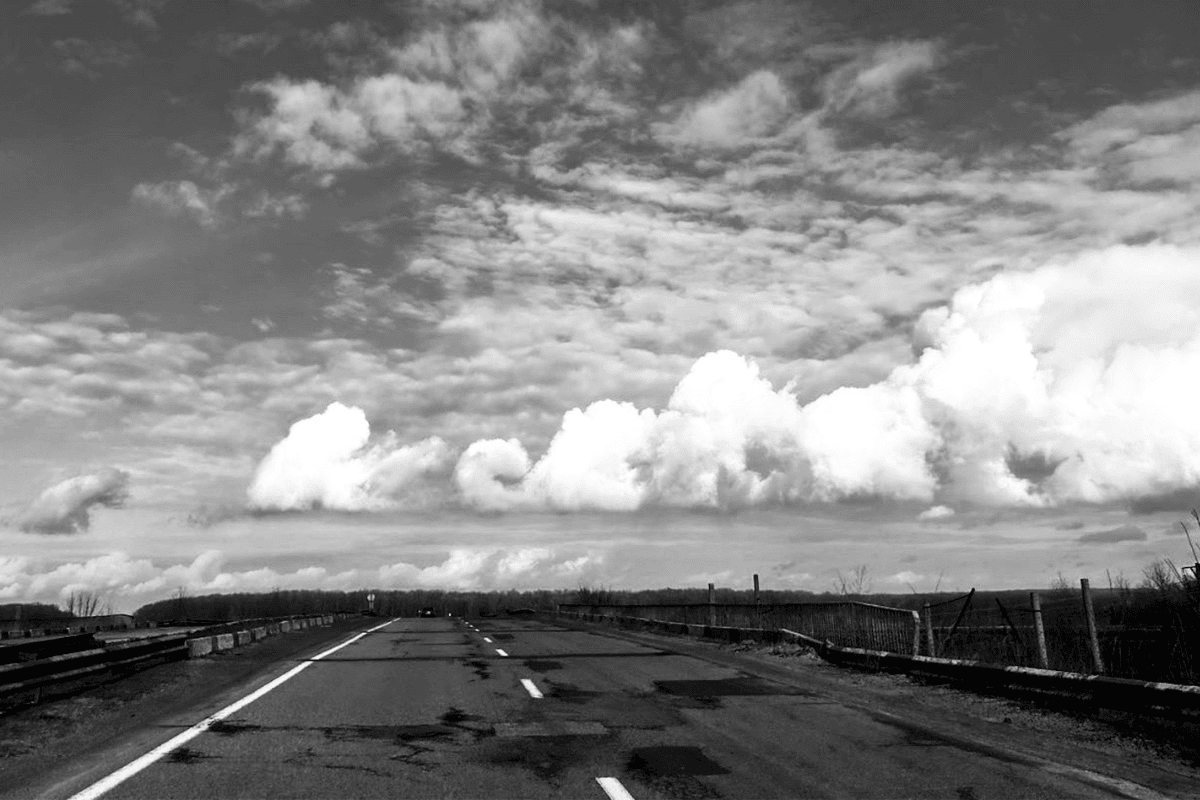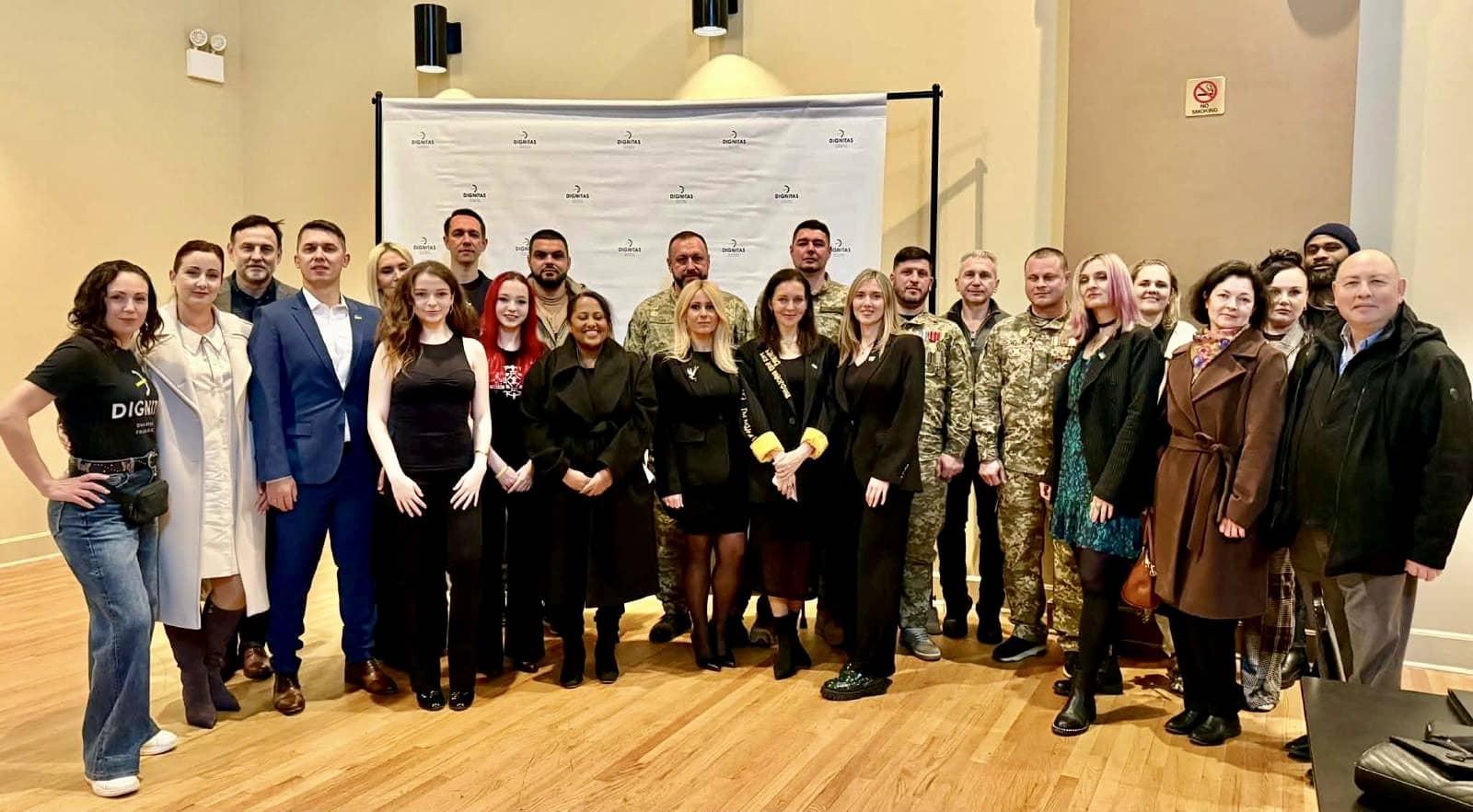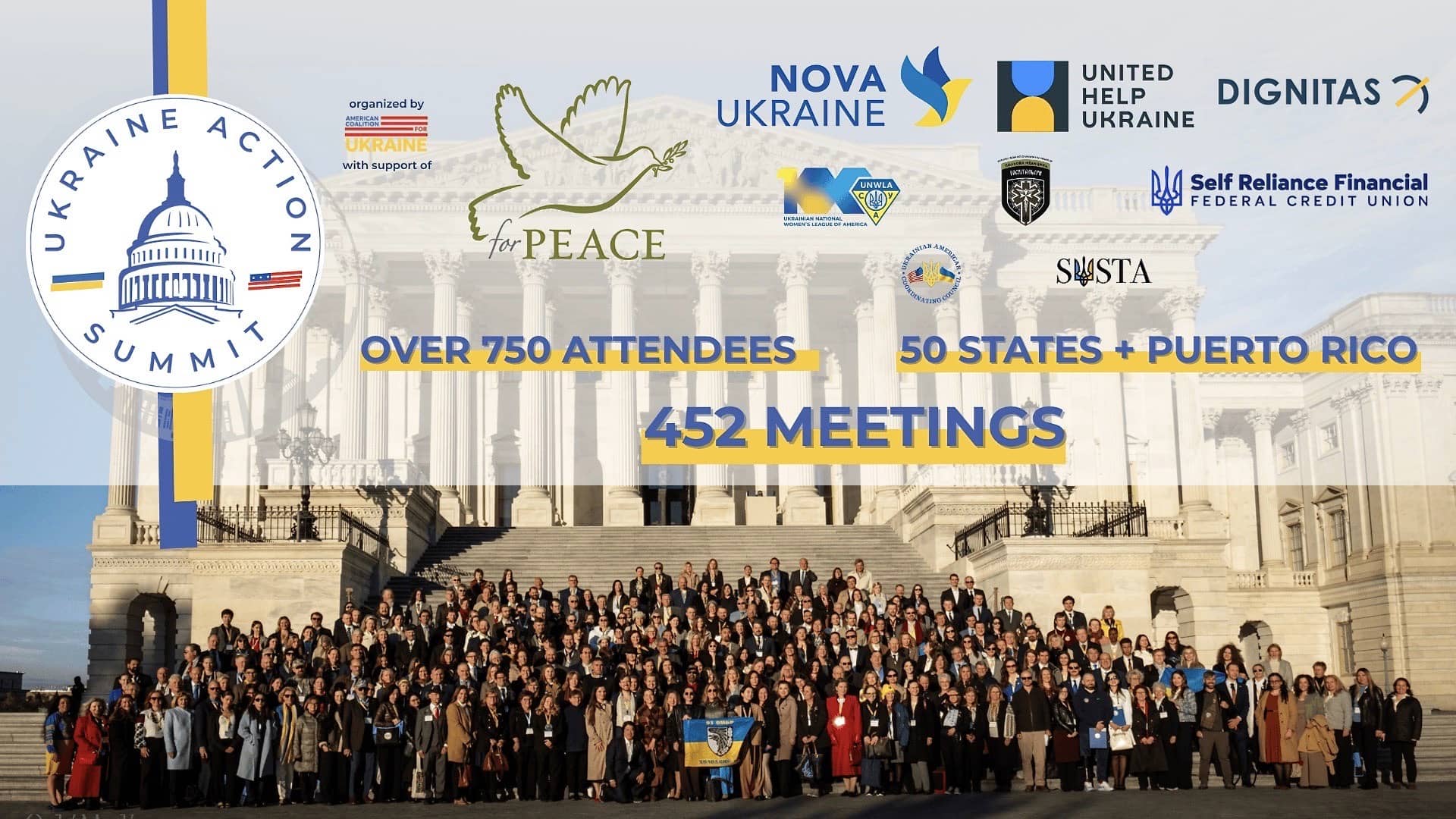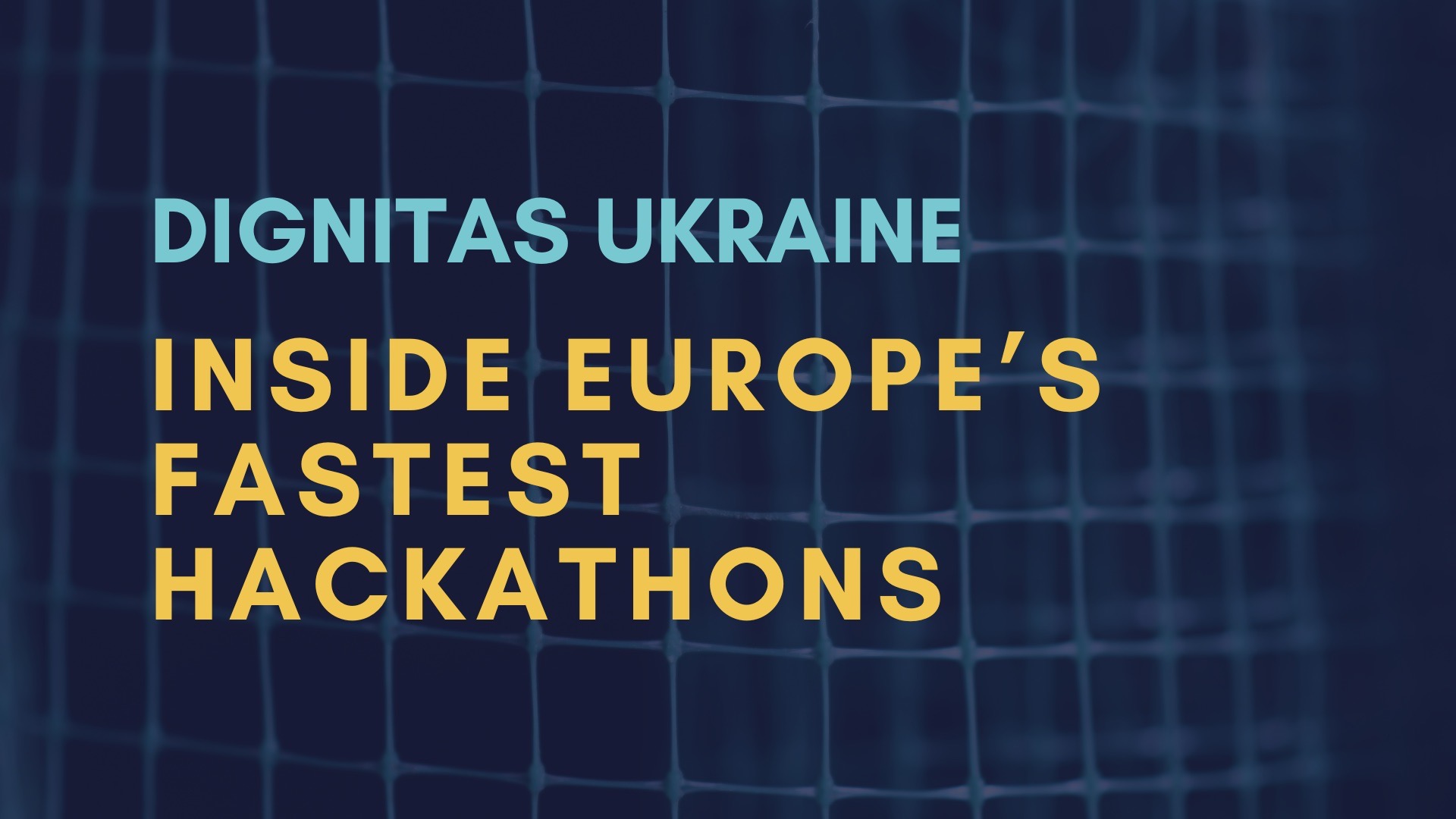What’s it like to drive through war-torn East of Ukraine, delivering drones to those who use them to save lives? What does war look like through the windshield of a mud-covered car? What do exhausted soldiers talk about over a shared cup of coffee?
Tetyana, one of our volunteers, shared her reflections after a recent trip to a part of Ukraine where destroyed cities stand beneath stunningly blue skies — where gratitude is exchanged through patches, chocolates, and unspoken understanding.
This isn’t just a trip. This is life on Ukraine’s frontline.
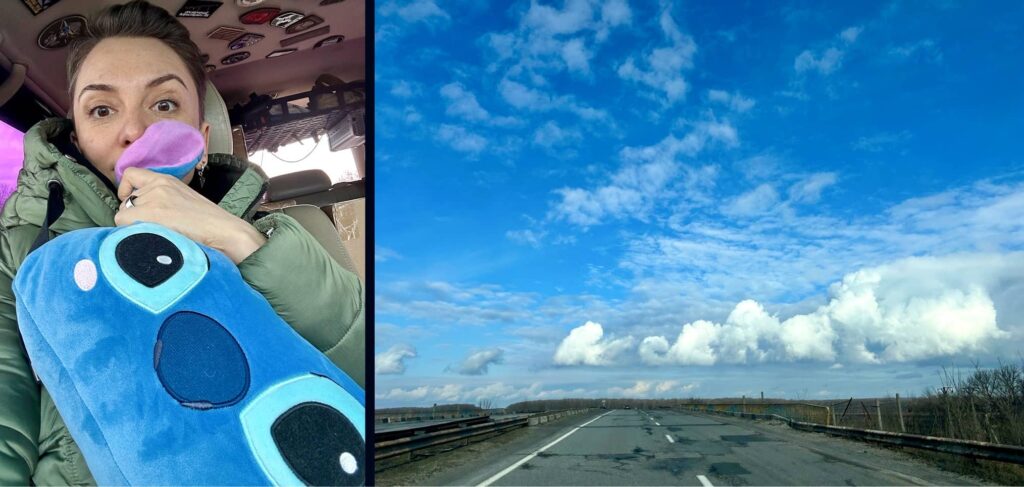
- Let’s Go?
- Let’s Go!
Monday, 7 AM. We’re leaving Kyiv. The car is loaded and fueled up, but we still stop by a WOG gas station for coffee. I smile because I see that the coffee machine is decorated with images of the cool commanders of popular military units K-2 and Achilles, reminding us that 2 UAH from every cup will be donated to the purchase of drones for these combat units.
This is our second trip as volunteers. The first one was in December 2024, with the memorable number 500 of the Dignitas Charity Fund. That’s when I met Serhii, the driver. Serhii served in a tank brigade; now he’s a retired veteran. I’m, let’s say, the navigator officer. We’re volunteers.
While Serhii drives, I go over the route plan. We have several packages to deliver, but I wish we had more — after all, this is for OUR guys. But we have to work with what we have.
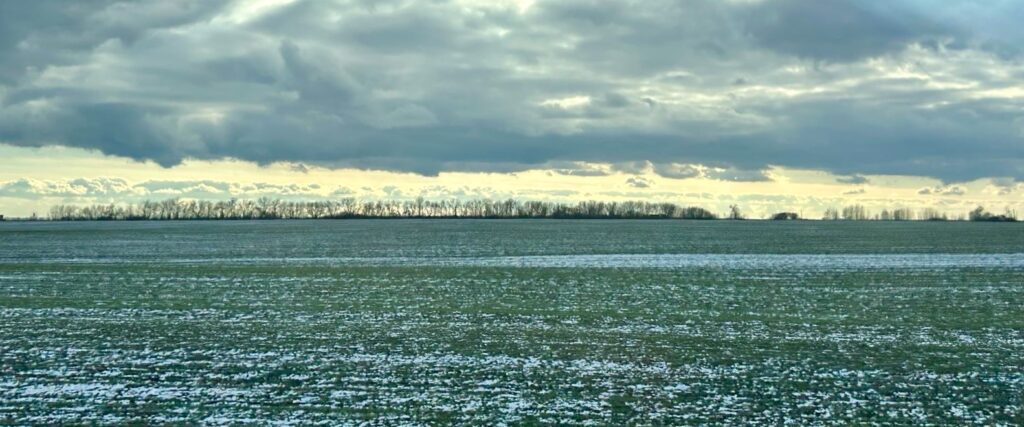
First stop — Poltava. We hand over a package. Our colleagues in the chat informed us that the woman who completed training at the training center we help has already become a platoon commander. Wow, impressive.
Next stop — Kharkiv. We deliver two more boxes with drones. The guys are thrilled and tell us how useful they are and how they help save the lives of our guys. They affectionately call them “birdies.” The day is cold but beautiful — watercolor-like skies and sunshine make our photo reports with the military men look like a professionally staged photoshoot.
Then — Balakliia. We deliver two more “birds.” The warriors thank us. I feel slightly awkward — who should really be thanking whom? We drink tea and head toward Izium.
As we drive, I take in the surroundings. Last time, we were here at night. This time, it’s daytime — blue skies and sunlight. Serhii, who served in the Kharkiv region, knows everything around here. He points out a village up ahead that saw intense fighting back in 2022.
“Over there,” he gestures left, “destroyed tanks stood for a long time. See that tank turret?” I do.
“And those little flags? Those mark mines.”
I ask if they plan to clear them.
“Nah,” he says. “That’s russia over there. What’s the point?”
I nod, no further questions. Then he points out small memorials near the flags.
“Those are for our fallen heroes.”
There are a lot of them. A whole lot.
Before I can fully process my emotions, we pass a devastated village. Houses are torn apart, buildings have no windows or roofs. And above it all — an incredibly blue sky.
Izium is suffering too. Before entering the city, I take a picture of a destroyed bridge. I show it to Serhii.
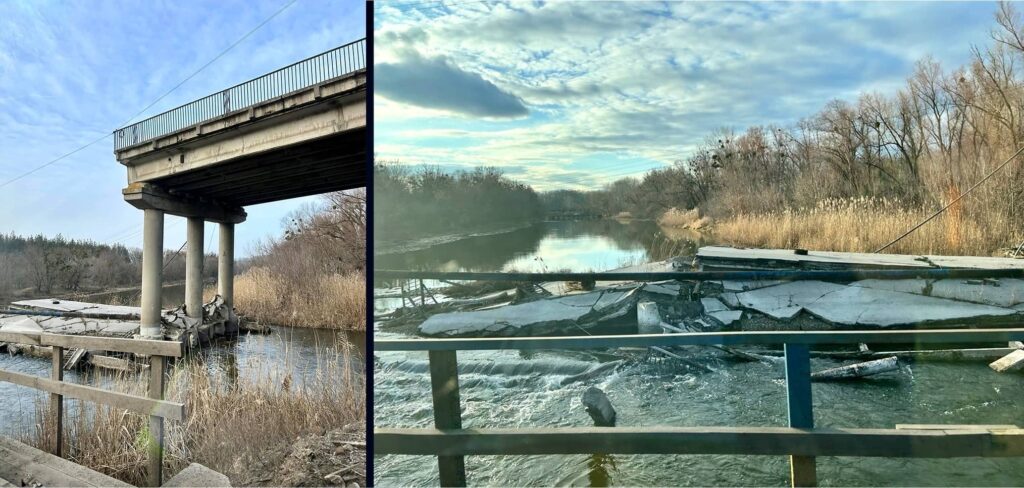
“It’s beautiful,” I say. Then I hesitate. “Well, I mean, not ‘beautiful’ — but compositionally strong.”
We laugh, saying I could go into politics with that kind of phrasing.
We pass a five-story apartment building. It still has the first and fourth entrances, but the second and third are just… gone, from the first to the fifth floor. It’s not the only one like that. The cityscape is grim, but what’s even scarier is that it’s not just about the past — it’s about the future too. The enemy clearly won’t leave this place alone.
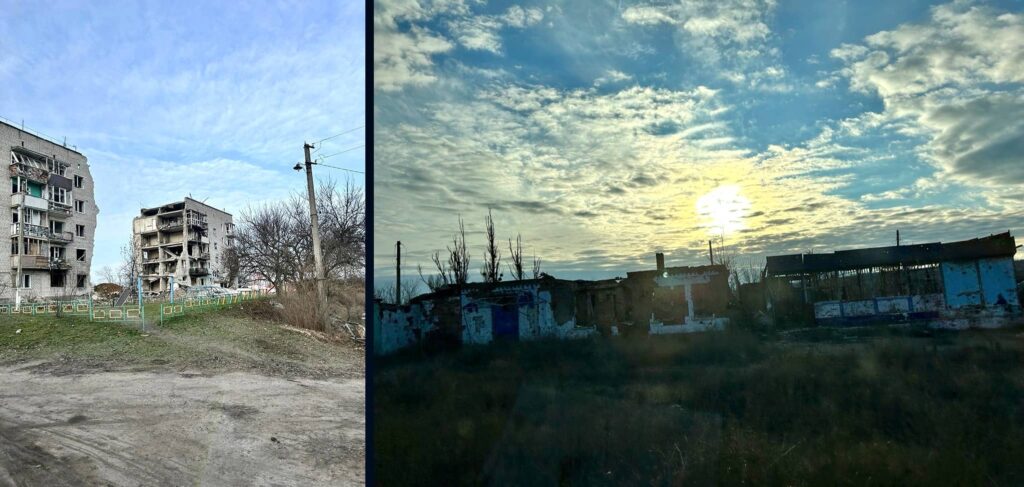
We see a well-maintained building that looks like a hospital or an administrative office.
“Wow, look at that,” I say. “Is it new or rebuilt?”
The next day, I recognize the building in an episode where it was hit by a ballistic missile. We were there at 8:30 AM. The strike happened at 12:30 PM.
I text my military friend: “Did you see? A hit. We were just there this morning.”
His response is calm: “Well, the East is always a lottery.”
Were we scared? Not really. War is a lottery.
We reach our next stop and hand over another “bird.” Serhii asks the military man how things are. While they talk, I plan the next route. We hug each other and move on.
We take a photo at the “Donetsk Oblast” sign — it’s a tradition. Last time, we didn’t make it to Sloviansk; we handed off supplies directly on the highway. This will be Serhii’s and my first time here.
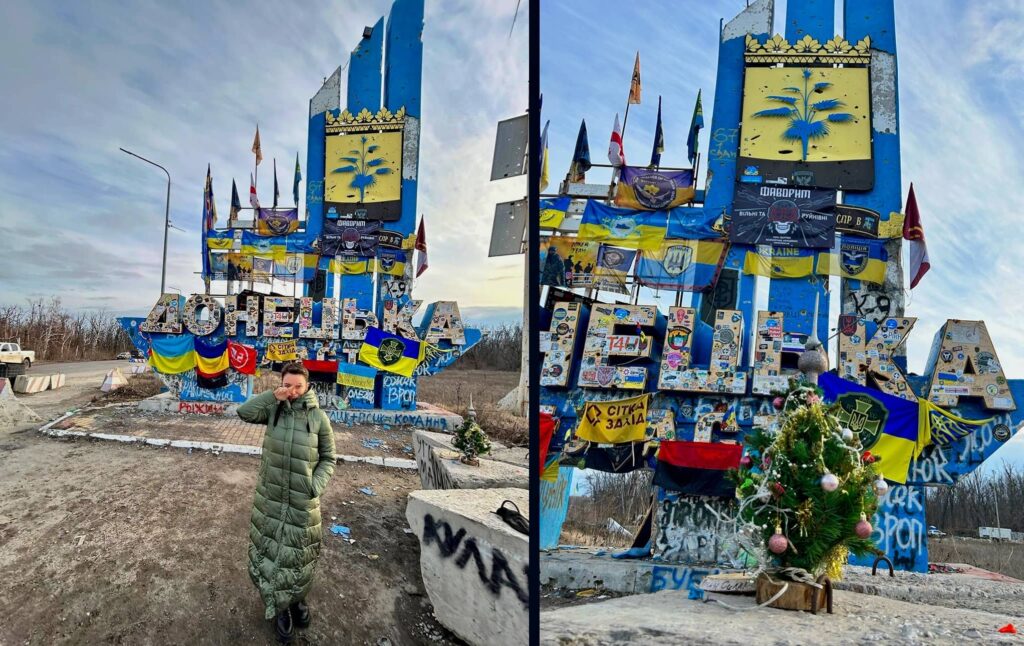
Many of my people are here. They warmly call that town “Slavik.” For some reason, both Serhii and I expected Sloviansk to be a ghost town. But it’s very much alive. We see a bank and a café. A woman walks by with a very young child.
We have a few meetings here. We hand over the first package and discuss the drones like true military ornithologists 🙂 For the first time, I see what a “Baba Yaga” drone looks like in a military man’s phone photo. Killingly beautiful.
The next group of military men arrives. It’s already getting dark. I only slept 4.5 hours before the trip, and between the long drive and overwhelming impressions, I’m staying upright purely by willpower.
We hand over five more packages. They’re happy. In gratitude, they give us their unit’s flag and patches. They tell us the delivery was perfectly timed — they recently ordered small bottles of water and will use our drones to deliver them to their brothers-in-arms who are stuck at the front line for days. I listen to every word. A tired brain hears the words but postpones the story for processing and comprehension for later.
More military men arrive. One looks like a medieval artist — or a saint from an icon. We shake hands, hug, and hand over the “birds.” One of them hands me a gift bag. I peek inside — it’s a box of Raffaello chocolates. I thank them, feeling a tightness in my chest.
All four insist we have coffee together. This shared coffee is equally important for them and for us. We chat. They’re good guys, trying to stay positive. Later, when Serhii and I ask each other what stood out the most from the trip, I will say that what struck me the most were their eyes and the overwhelming exhaustion in them. But well… it’s war.
We finish our coffee, hug, and part ways. It’s already dark. A man walks past me with giant glowing balloons. It looks surreal, and I ask Serhii if he sees them too. He does.
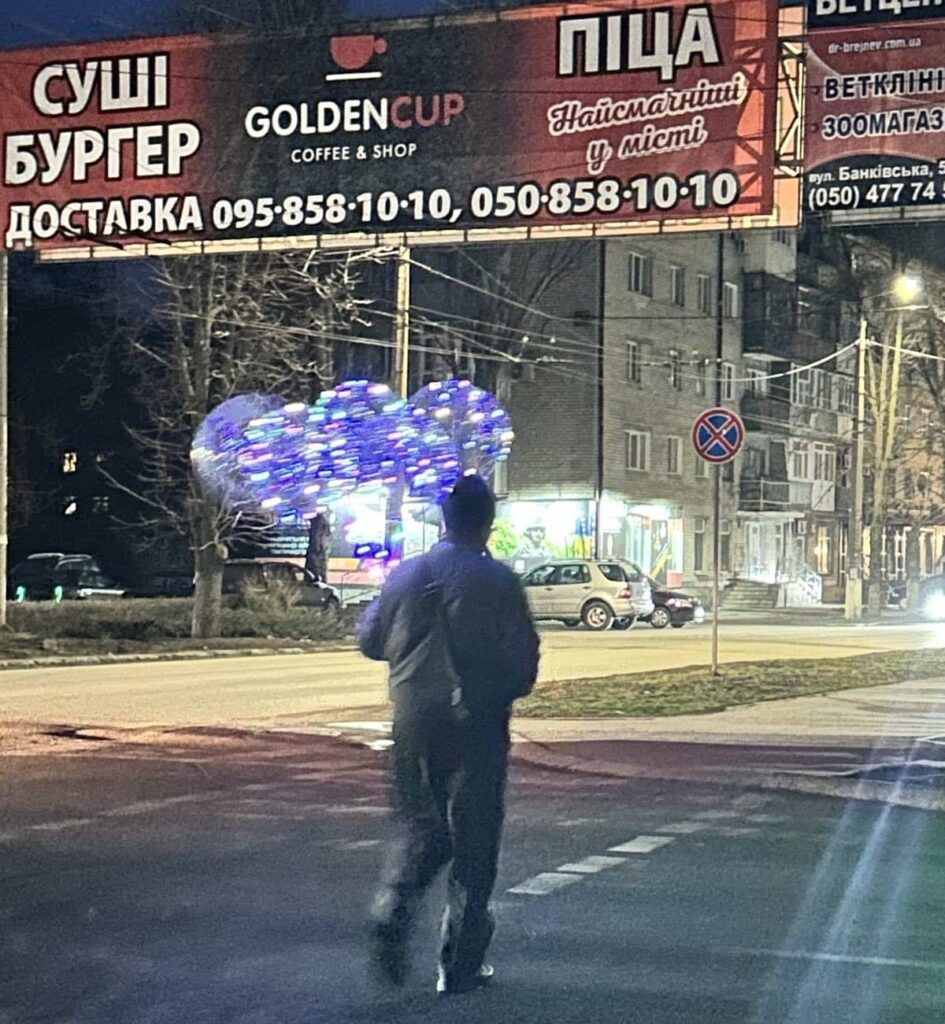
We stay overnight and head out first thing in the morning. Sloviansk. Kramatorsk. Nearby — Druzhkivka, where I also have my people. We head south. Before the trip, my brother, who is also serving, reviewed our route and marked places we must not go beyond. We stick to his guidance.
We take a photo at the “Pokrovskyi District” sign. I know we’re not closer than 25 km from Pokrovsk, but just knowing we’re here puts me on edge. Not scared — just hyper-focused. We can’t miss our turn.
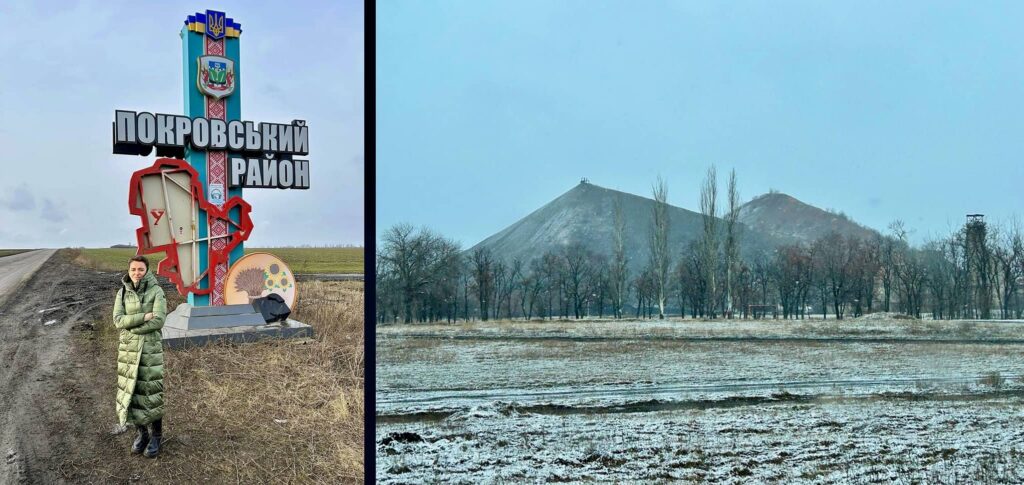
Serhii asks, “You wanted to see terykony (pyramidal mine waste mounds), right? There you go.” A huge, snow-covered mound rises before us, with two more in the distance. I squeal in delight. Terykony are beautiful.
We pass another “Donetsk Oblast” sign, covered with camouflage netting and surrounded by flags. No photo this time — it’s on the other side of the road. Next time.
We turn onto our route — a bypass around Pokrovsk. The road to the city is good, they say. The bypass… not so much. I want to joke that our road heard what roads should be like and pretended to be one but failed miserably. But honestly, these kinds of roads are everywhere. Any small town, especially a village, has these roads — not just in the East.
We crawl at a snail’s pace in a line of other cars.
We hand over the last batch of drones. More hugs. Mission accomplished, but we need to take a detour to visit a comrade. Snow fell overnight. The countryside is stunning. We are not. The temperature is -2°C, the snow has melted on the road, and our car is now like a mud trophy champion. We see a stuck car. Turns out they tried to AVOID the bad road — by driving THROUGH A FIELD 🙂
We pull them out. Serhii chats with them and returns completely happy.
“You know what I miss?” he asks.
“What?” I ask. “War?”
“No. Brotherhood. The purity of the East. The military spirit. Here, everyone helps each other.”
I believe him. Even with my limited experience in the East, I feel supported and looked after at every step — by my people, who constantly check in, asking where I am, if I’m okay, or if I need anything. Supported by my people in the East. And by my people in Kyiv — the East belongs to them, not just in theory but in practice, to them and their brothers-in-arms.
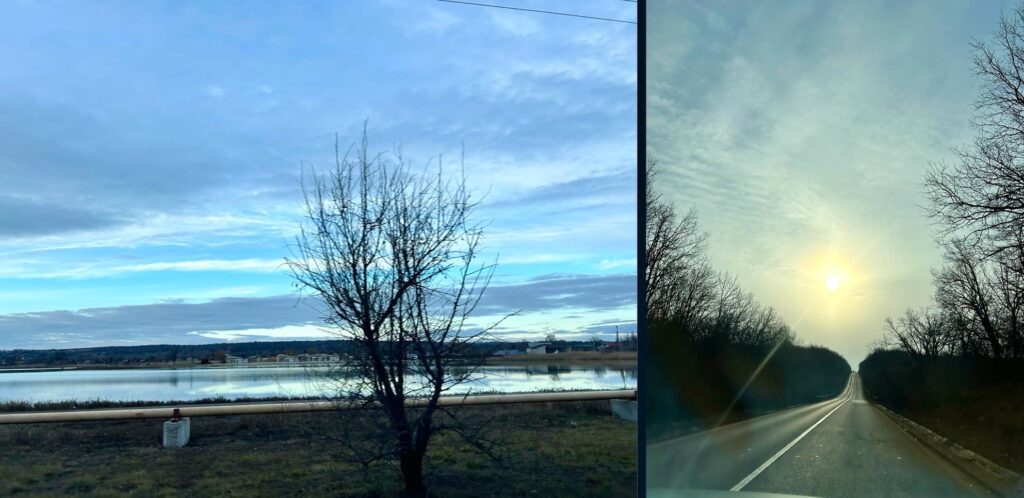
A hare suddenly dashes across the road. Brown-gray, long legs. I scream, “AAAAAH, A HARE!” Serhii laughs, saying the poor thing probably now has a mild concussion from my scream.
The job is done. Time to return to Kyiv. A long road ahead.
